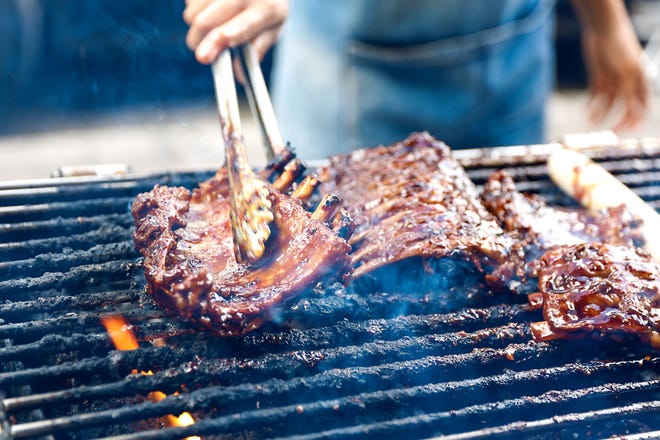Summer is upon us and it’s hard to pass up the opportunity to enjoy a barbecue or picnic on a nice sunny day.
But maintaining safe food temperatures when cooking and enjoying meals outdoors can be a challenge. Here are some ways to keep food safe to eat when hosting a barbecue or picnic.
Food Temperature: What is a safe temperature for cooked meats and cold foods?
If you’re a fan of good grilling and dining outdoors, there’s nothing quite like a laid-back meal with good food and good company. It’s natural to want to prolong the experience, especially in a place like upstate New York, where perfect summer days can be a rare sight.
However, you should be careful about the temperature of the food.
The New York State Department of Health recommends that cooked meat be eaten within two hours, before the temperature drops below 140 degrees.
The U.S. Food and Drug Administration recommends keeping cooked meats away from direct heat on a grill rack or, if cooking at home, keeping them warm in a slow cooker, warming tray, or chafing dish.

Keep cold foods refrigerated or on ice until ready to eat. Keep them below 40 degrees to prevent bacterial growth. Leftovers that require refrigeration should not be left out at room temperature for more than two hours.
The temperature outside will also affect when you need to put food back in the refrigerator.
If it’s 90 degrees outside, the Academy of Nutrition and Dietetics recommends not leaving food outside for more than an hour.

What foods need to be stored in a cooler or on ice?
While meats cooked on the grill should obviously be kept at a safe temperature, other outdoor picnic essentials should be treated the same way. Perishable foods should only be left outside for a maximum of two hours, especially those that contain ingredients like mayonnaise or dairy products. Eggs, potatoes, and tuna salads should also be kept on the safe side.
Just because it’s in a cooler doesn’t mean it’s safe
When using a cooler, avoid opening it too much and try to keep it closed to keep the contents colder for longer, according to the FDA.
If possible, store beverages in one cooler and perishable foods in another so that the perishable foods are protected even if the cooler is opened and reopened.
To keep cold foods safe, store your cooler out of direct sunlight.

Handling raw meat safely
If you store raw meat or poultry in a cooler with other foods, the FDA recommends storing it at the bottom to avoid cross-contamination.
Always store meat or poultry in sealed packages, and if the juices from one piece of chicken get onto other meats, they should be cooked to an internal temperature of 165 degrees.
Take out only the meat or poultry that will fit on the grill and cook quickly — it’s handy to have the next piece of meat on hand, but it needs to be kept cold until you’re done cooking.
The Academy of Nutrition and Dietetics recommends filling your cooler about three-quarters full with already refrigerated or frozen foods and the rest with ice or ice packs.
— Steve Howe covers weather, climate and lake issues for the Democrat and Chronicle. A RIT graduate, he returned to Rochester after working around the state and in Utah. Contact him at showe@gannett.com.


